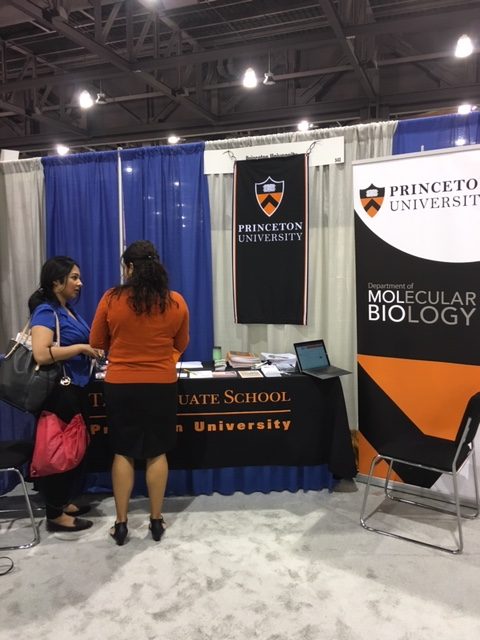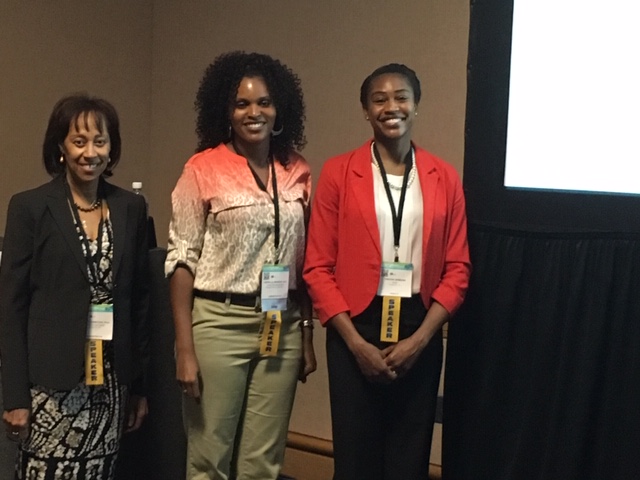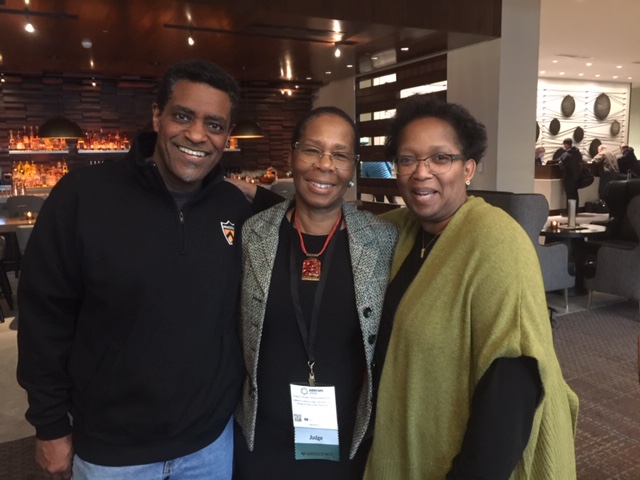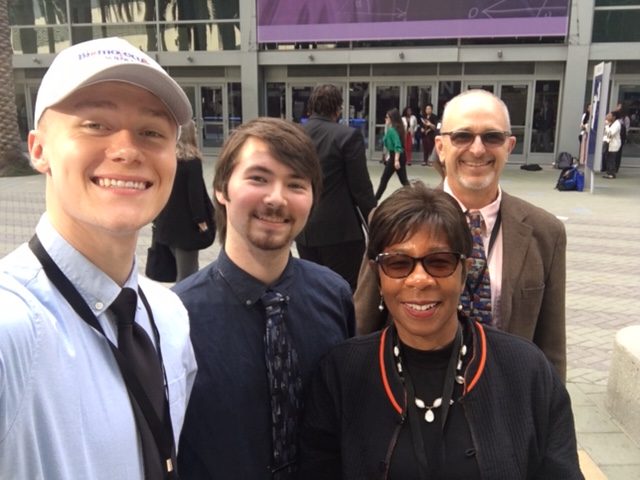ABRCMS Scientific Mission: Launching Next Gen Scientists
ABRCMS (Annual Biomedical Research Conference for Minority Students) was held Nov 13-16 in Anaheim, California. ABRCMS is a research meeting of approximately 5,000 attendees, of which 80% are underrepresented minorities (URM) from 12 scientific disciplines, all fifty states and several US territories. Over 50 plenary sessions and 2,000 talks and posters were delivered by students and judged by attending faculty from each scientific discipline.

What is ABRCMS
This was my 5th ABRCMS. I judged 12 posters and talks, gave two seminars, attended 3 networking dinners, gave 1 interview for a podcast (see STEMulating conversations with Dr Q) and managed to get in a round of golf. Some people have been coming to ABRCMS for 17 years and others have just discovered it. The community of ABRCMS includes students, faculty researchers, training program coordinators, industry and academic recruiters, and various stakeholders from private, public, and government agencies. The intent of the conference is to help attendees gain self-efficacy, research confidence, and a sense of belonging in science.1
Why ABRCMS
Almost everyone knows that it takes more than innate intelligence to succeed at anything. Science and medicine are full of examples of great measures that fail to launch despite intelligence. Students who come to ABRCMS are surrounded with over 12 hours of programming each day that reminds them of the opportunities to pursue research at the graduate levels.

2016
They are also entertained with plenary lectures from luminaries like Soledad O’Brien, the relatives of Henrietta Lacks, and physician scientists who describe how grit, communication, flexibility, fortitude and innovation are intrinsic to a successful career in science. ABRCMS represents a special group of people who will be the future majority owners, consumers, and stakeholders of science, medicine and technology in the US.

The Landscape
According to a 2019 report written by Grace Chen for the blogpost “Public School Review” the U.S. Department of Education’s Office for Civil Rights, recorded inequalities in access to education for the period 2013-14 for minority students throughout the nation2:
- One-fourth of schools that have the highest concentrations of Hispanic and black students do not offer Algebra II. One-third of these schools do not offer chemistry.
- More than half of American Indian and Alaskan Native students attend schools that do not offer the full scope of math and science courses.
- Black, Hispanic and Native American children are far more likely than white students to be taught by first-year teachers.
- Black and Hispanic students are more than twice as likely to attend a school at which more than 40 percent of teachers do not meet all requirements for state licensure and certification.
To address some of these inequities, more recent administrations signed the Every Student Succeeds Act (ESSA) into law on December 10, 2015. Some of the areas addressed by ESSA include3:
- Upholding critical protections for America’s disadvantaged and high-need students.
- Requiring—for the first time—that all students in America be taught to high academic standards that will prepare them to succeed in college and careers.
All in
A report in the journal Nature Biotechnology indicated that despite acts like the ESSA, inequity in access to science is a problem that needs a remedy. With a population of >323 million, of which 61.3% identify as white non-Hispanic, 17.8% Hispanic or Latino, 13.3% black or African American alone, 5.7% as Asian alone, 1.3% as Alaskan native or native American, and 0.2% as Hawaiian or Pacific islander there is disproportionate representation of minority populations in scientific careers.4 Institutes of higher learning in the US are seeing a change in the demographics of their student populations. The U.S. Census Bureau reports that fewer than half of students under 18 will identify as non-Hispanic/white in 2020.5 When these students enroll in higher education, some will successfully complete a graduate education and occupy the research space. Fewer than 4% of Blacks and Hispanics will successfully compete as principal investigators for grants from the National Institutes of Health. In contrast, 16% of grant holders are Asian and 71% are Caucasian.2,4 The academy is failing to grow, diversify, and meet the needs of many underrepresented minorities and first-generation scientists. That is why programs like ABRCMS are needed.

David Rollock and Alysa Christmas-Rollock
My experiences with ABRCMS have convinced me to be all in. During each of these past 5 years I have given ABRCMS 1 week of my time. This year my experience at ABRCMS, included mentoring minority and majority students who face uneven hurdles in obtaining higher education and funding in science. I spent part of my ABRCMS with two students from rural West Virginia who have aspirations of working in mental health and addiction. They are first-generation college students surrounded by family and peers that would rather that they learn a “skill” rather than create a “career” in science or medicine. Their primary hurdle is escaping rural West Virginia. During our networking dinners, they taught me that inequality in education has ringing repercussions for everyone.

References
- Casad B. et al., The Benefits of Attending the Annual Biomedical Research Conference for Minority Students (ABRCMS): The Role of Research Confidence. CBE Life Sci Educ. 2016; 15(3): ar46
- Chen, Grace Changing Demographics will alter the Diversity of Public Schools, August 31, 2019. Accessed at https://www.publicschoolreview.com/blog. on December 1, 2019.
- U.S. Department of Education, office for civil rights. Every Student Succeeds Act. Accessed at https://www2.ed.gov/about/offices/list/ocr/ on December 1, 2019.
- Huggett, B. Biotech’s pale shadow. Nat Biotechnol 2018; 36, 20–30.
- New Census Bureau Report, March 3, 2015. Accessed at
https://www.census.gov/newsroom/press-releases/2015/cb15-tps16.html. on December 1, 2019